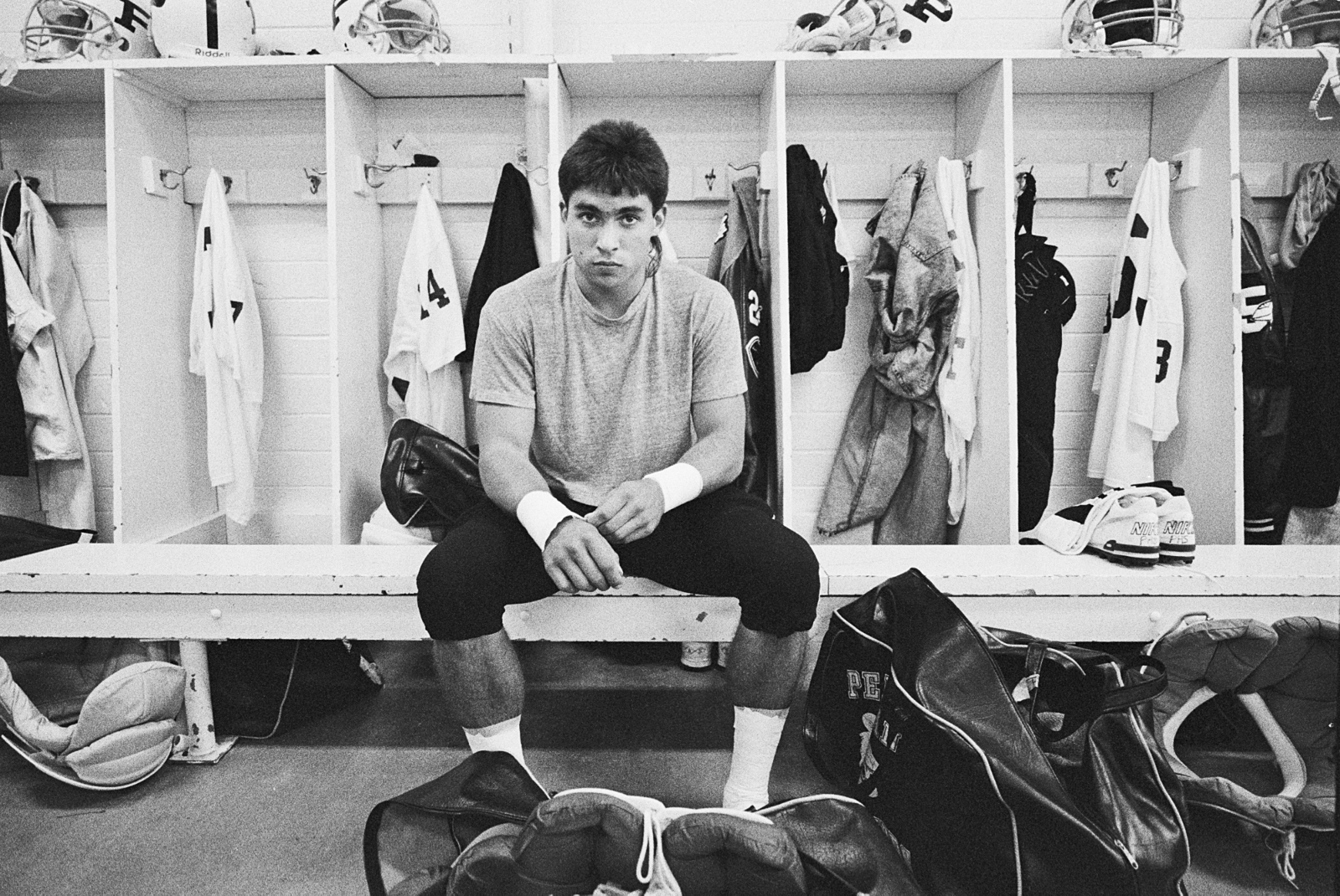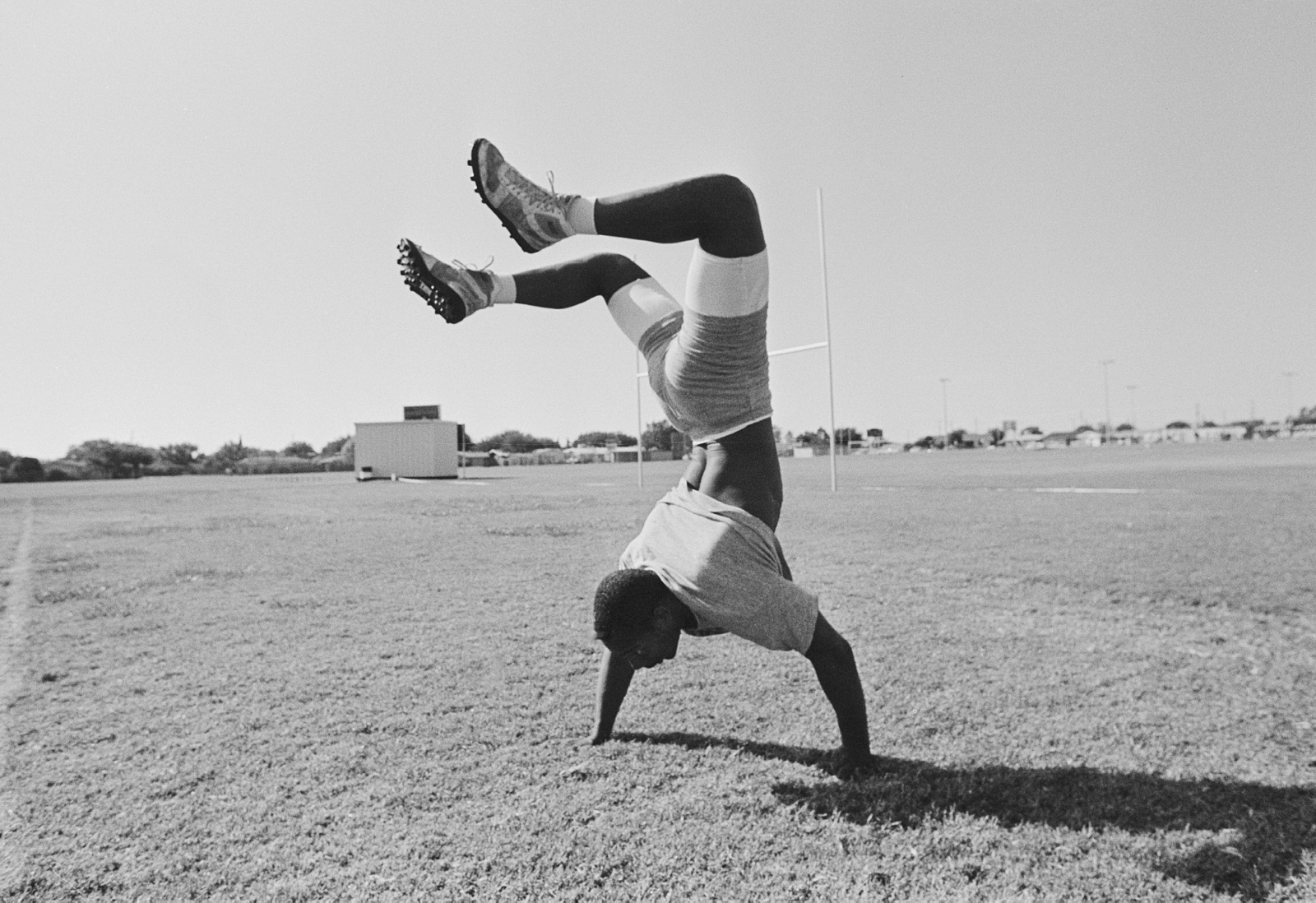Thirty years after "Friday Night Lights," Robert Clark takes us back to the world of the Permian Panthers

When I answer the phone to speak with photographer Robert Clark, the Kansas native is calling from his car as he makes the 18-hour drive from New York to visit his ailing father. His father’s condition is a reminder that many years have passed since 1988, when 28-year-old Clark, his career just beginning, caught his big break photographing the Permian Panthers in Odessa for Buzz Bissinger’s Friday Night Lights. He couldn’t have known that book would go on to be a cultural staple that inspired a popular movie and nationally beloved TV show.
But the notion of time passing runs through the pages of Clark’s latest project Friday Night Lives, a collection of never-before-published photographs of the Permian Panthers from the 1980s. The book from UT Press is part-time capsule, showing the Panthers in their glory days. But Clark also captures how the years have had its way with the once-young Odessa heroes, having returned to West Texas to photograph the men in their current lives. The Alcalde spoke with Clark about the most iconic high school football team in Texas history—and where the players are now.



When did you decide to pick this project back up?
I was thinking about doing it for the 25th anniversary. Honestly, I just got too busy and it slipped to the back burner. But I think the longer you wait, the more striking the differences are between then and now—like you see the acid-washed jeans and the really big hair on all the girls.
What was it like revisiting your old photos?
The ones that are published in the original book I’m so familiar with. But I hadn’t really looked at the proof sheets intensively for a long time. As I was starting to look at them, I was really heartened and pleased with how many pictures I was finding. So, I looked at them and I thought, Well, can this really be a book? I reached out to a friend of mine, DJ Stout, who used to be a designer at Texas Monthly, and he put me in touch with the people at UT Press. I just thought this should be done by somebody in Texas—it made it feel more complete.
Do you have a favorite image in the book?
I love the one of Mike Winchell with the balloons. That’s kind of my classic picture and it’s really one of my favorite pictures I’ve ever shot in my career. There’s something about his face, his expression, and the way his hand is. It’s these tiny details that make a picture interesting or special. I just keep coming back to that as a photographer. I think we all have stories and things we do that develop more meaning for us over time.
What do you remember about that time in Odessa?
I was out there for about two and a half weeks. Odessa was a lot like my hometown of Hayes, Kansas. Hayes has oil. It’s got a university there. It’s a lot smaller than Odessa, but it’s kind of the same culture in a way—it’s a tough town. So goes the oil industry, so goes Odessa. They were in a bit of a downturn when we were there, which just kind of gave a clearer sense of the environment. So, when there’s something to feel good about, like the football team, like Permian, it got even more attention. In those moments when times were rough, the football team was consistently really good. And that was something that the town could be proud of.
You’ve kept in contact with the players. How was it going back to photograph them now?
Well, it’s always interesting. Brian Chavez is a successful lawyer and he’s always in a good mood. It’s been nice to be in touch with Mike Winchell. Don Billingsley, who was kind of a wild child, is born again and a really sweet guy with a big family. It’s just interesting to see what has happened. Life goes on and there are ups and downs and yet, they’re stuck in my negatives as these beautiful, young guys. Now they’re middle-aged men who’ve had knee replacements or things like that.
What about Coach Gary Gaines?
That’s a sad story, actually. At about age 58, he started to show signs of Alzheimer’s. There’s a picture of him in the book. I went to the care facility with his wife and his son. I’m so thankful they let me come along but he didn’t remember the book; he doesn’t remember me. He doesn’t really, probably at this point, remember coaching. But like I said, life happens to people.
Anything else you’d like to add?
I think this a really great project, 30 years later. You know, I think my photographs helped make Friday Night Lights memorable. Nobody had ever written or published something like that and it was kind of the perfect storm. And with Friday Night Lives, I’m just happy to have it out in the world now.
This interview has been edited and condensed.






